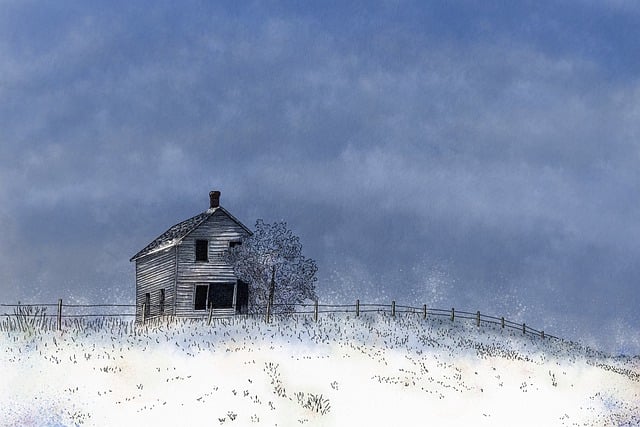Large properties present unique fencing challenges, demanding solutions that balance robust security with cost-effectiveness. This article delves into efficient fencing strategies tailored for expansive landscapes, exploring both traditional methods and innovative, budget-conscious alternatives. We’ll dissect the importance of material selection, design flexibility, strategic installation, and proactive maintenance to ensure your fence not only secures your property but also enhances its visual appeal without breaking the bank.
- Understanding Fencing Needs for Large Properties
- Traditional Fencing vs Cost-Effective Alternatives
- Materials: Balancing Durability and Budget
- Design Options for Enhanced Security and Aesthetics
- Installation Considerations for Efficient Savings
- Maintenance Tips to Prolong Fence Lifespan and Value
Understanding Fencing Needs for Large Properties
Large properties present unique fencing challenges. Beyond simply enclosing space, owners often have security concerns, visual aesthetics in mind, and may require specific functional elements like gates or access points. Understanding these diverse needs is crucial for selecting an effective fencing solution. For instance, a ranch owner might prioritize durable materials that withstand harsh weather conditions and support livestock containment, while a homeowner desiring privacy would focus on dense, solid barriers.
Additionally, the size and layout of the property play significant roles in determining fence type and design. Wide open spaces necessitate longer-lasting, low-maintenance options, whereas irregularly shaped plots may call for custom-fitted solutions. Understanding these nuances allows for the implementation of cost-effective fencing strategies tailored to meet the specific requirements of large properties.
Traditional Fencing vs Cost-Effective Alternatives
Traditional fencing materials like wood and metal have long been the go-to options for property boundaries, offering both privacy and security. However, these conventional methods can be expensive, especially for large properties where extensive lengths of fencing are required. In recent years, cost-effective alternatives have emerged, providing homeowners and land owners with more affordable ways to secure their spaces.
One such alternative is vinyl fencing, which is durable, low-maintenance, and significantly less costly than traditional materials. Vinyl fences come in a variety of styles and colors, allowing for customization to suit individual preferences while still offering excellent privacy and security. Another option is chain link fencing, often chosen for its strength and affordability, making it suitable for areas requiring higher security levels, like backyard play areas or large agricultural lands. These modern alternatives not only save on expenses but also provide long-term solutions that require minimal upkeep.
Materials: Balancing Durability and Budget
When considering fencing options for large properties, balancing durability and budget is essential. While the most robust materials like steel or concrete provide long-lasting protection, they can be significantly more expensive than alternative options. Wood, for instance, offers excellent visual appeal but requires regular treatment to prevent rot and pests, adding ongoing maintenance costs. Composite materials, a hybrid of wood and plastic, offer a cost-effective solution that resembles wood without the same level of upkeep.
Fiberglass and vinyl are other budget-friendly choices known for their durability, low maintenance, and resistance to rust and rot. These materials can withstand harsh weather conditions and require minimal cleaning, making them ideal for large properties where regular upkeep may be challenging. Ultimately, the choice of material should consider not only the initial cost but also long-term savings in terms of maintenance and replacement.
Design Options for Enhanced Security and Aesthetics
When it comes to securing large properties, fencing offers both a practical solution and an opportunity to enhance curb appeal. There’s a vast array of design options available that cater to various aesthetic preferences while still maintaining robust security. From traditional wooden picket fences, which exude classic charm, to modern metal or vinyl barriers, each material presents unique visual appeals and levels of durability.
For an elevated look, wrought iron fences provide elegant curves and intricate designs, adding a touch of sophistication to any property. Alternatively, chain link fencing is both cost-effective and versatile, allowing for customization through various mesh sizes and additional coatings. These design choices not only strengthen security but also contribute to the overall ambiance and value of the landscape.
Installation Considerations for Efficient Savings
When considering cost-effective fencing solutions for large properties, efficient installation should be a primary focus to maximize savings. One key consideration is the terrain; uneven or complex landscapes often require specialized equipment and skilled labor, which can increase costs significantly. Therefore, evaluating the ground’s topography beforehand allows for better planning and potential use of more affordable installation methods.
Additionally, choosing the right materials can substantially impact installation efficiency and overall budget. Opting for versatile, durable, and low-maintenance options like vinyl or chain-link fences can streamline the installation process, reduce labor costs, and lower long-term maintenance expenses. Efficient use of resources and strategic planning during installation are vital steps in achieving substantial savings without compromising on quality.
Maintenance Tips to Prolong Fence Lifespan and Value
Regular maintenance is key to ensuring your fence remains in top condition, maximizing its lifespan and retaining its value. Start by cleaning the fence at least twice a year, using a soft brush or pressure washer to remove dirt, debris, and any organic matter buildup. This prevents rotting and rusting, which can significantly weaken structural integrity.
Inspecting for damage is another vital maintenance step. Look out for loose or missing pickets, posts that are leaning, or signs of rot or pest infestation. Address these issues promptly to avoid further deterioration. Repaint or restain the fence as needed, especially in areas exposed to harsh weather conditions, to protect the wood and metal from elements that can lead to rusting and peeling.
